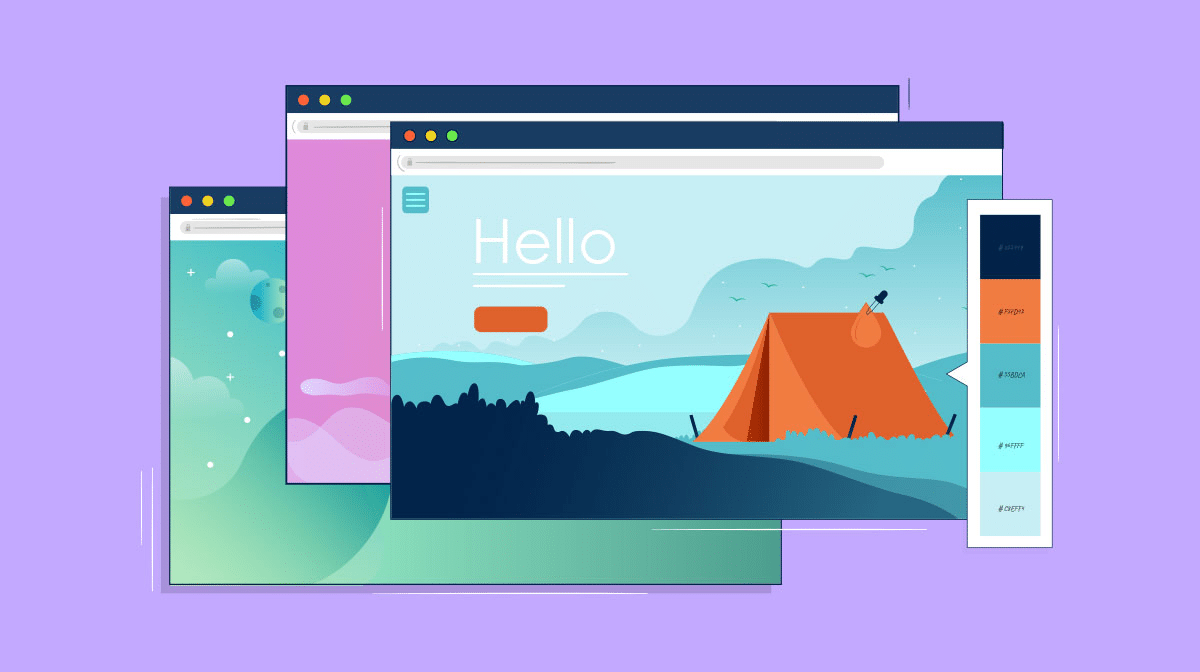Exploring the Diverse Web Design Menu Styles
Web design has progressed tremendously over the years, and one critical feature that has the potential to improve user experience is menu layout. Menus act as navigation centers for websites, allowing users to easily access various pages and content. A well-designed menu not only helps with navigation but also improves the overall looks of a website. In this post, we’ll look at the various web design menu layouts that have gained popularity and have become necessary components of modern web development. For website design rockingham read on. What are the different web design menu styles?
1. The Classic Horizontal Menu

The standard horizontal menu is one of the web’s first and most popular menu types. It is typically displayed at the top of the webpage, running horizontally across the screen. This style is simple and recognizable, making it appealing to a wider audience. Text connections to various website sections or pages are often seen in the horizontal navigation.
Web designers frequently integrate dropdown sub-menus to make it even more intuitive. When a user hovers over a menu item, a list of additional options or links linked to that item emerges, forming a content hierarchy.
2. The Hamburger Menu
The hamburger menu has grown in popularity in recent years, thanks in large part to the rise of mobile browsing. It gets its name from its similarity to a hamburger, which consists of three horizontal lines stacked on top of each other. The hamburger menu was initially utilized exclusively in mobile site design to conserve space and decrease clutter. However, due to its clean and minimalist appearance, it has recently made its way into desktop designs as well.
The hamburger menu extends into a full-screen overlay or dropdown when clicked or pressed, showing the navigation links. This design not only saves space but also improves the visual attractiveness of the website by keeping the menu hidden until needed.
3. The Vertical Sidebar Menu
The vertical sidebar menu is a common choice for websites that focus content while remaining clean and structured. Instead of taking up the entire screen, the vertical menu runs along the side, usually on the left, although it can also be on the right.
This style enables web designers to insert more menu items without cluttering the interface, making it appropriate for websites with a lot of content. The vertical menu also remains visible as users scroll down, ensuring constant access to navigation options.
4. The Mega Menu
The mega menu, as the name implies, takes the typical dropdown menu to the next level by displaying a wider, more complete dropdown panel. This design is suitable for websites with a large number of categories, subcategories, or goods.
Mega menus frequently include photos, icons, and even short descriptions to give visitors a visual representation of the content included within each menu item. This method allows users to find what they’re looking for more quickly and easily.
5. The Floating or Sticky Menu
The floating or sticky menu is intended to stay visible as users scroll down the page. It “sticks” to the top (or sometimes the bottom) of the screen, ensuring that navigation options are always accessible no matter where the user is on the website.
This design improves the user experience by removing the need to scroll back to the top to access the menu. Sticky menus are very useful for websites with many pages or one-page layouts.
6. The Full-Screen Overlay Menu
When activated, the full-screen overlay menu, like the hamburger menu, spans the entire screen. Instead of the standard hamburger icon, it frequently uses a more prominent and visually appealing button to open the menu.
This design is ideal for websites that wish to provide a visually engaging experience when the menu is viewed. It enables site designers to improve the overall user experience by incorporating unique animations or transitions.
7. The Tabbed Menu
The tabbed menu is a novel design that displays navigation options in the form of tabs. Each tab indicates a separate area or category, and clicking on one shows the content associated with that tab.
This style is extremely beneficial for websites that want to highlight specific portions. Tabbed menus can be positioned horizontally or vertically, depending on the aesthetics and functionality of the design.

Conclusion
The menu design you select for your website has a significant impact on the entire user experience. Each of the styles covered in this post has distinct features and is appropriate for various sorts of websites and content. To pick the best menu layout for your website, take into account your target demographic, the number of material, and the overall design aesthetics. Achieving the ideal combination of usefulness and visual appeal will surely result in a more delightful and engaging user experience.






